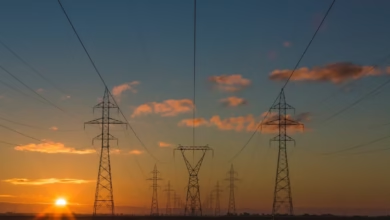Powering the Future: The Transition to Renewable Energy and Its Economic Impact

As the world grapples with the urgent need to combat climate change and reduce greenhouse gas emissions, the transition to renewable energy has emerged as a pivotal solution. Solar, wind, and hydrogen power are at the forefront of this energy revolution, offering sustainable alternatives to fossil fuels. Governments across the globe are stepping up their efforts to incentivize this shift, implementing policies and initiatives designed to accelerate clean energy adoption. However, the journey is not without its challenges, particularly in the realm of energy storage, which plays a critical role in ensuring reliability and efficiency in renewable energy systems.
This article delves into the multifaceted landscape of renewable energy, exploring how advancements in technology and government support are reshaping the energy sector. We will also examine the evolving role of nuclear energy in a low-carbon future, the adaptation strategies of oil and gas companies, and the impact of electric vehicles in reducing fossil fuel dependency. Additionally, we will analyze the economic implications of fluctuating energy prices and highlight innovations in energy efficiency that promise significant cost savings. Join us as we navigate the complexities and opportunities within the renewable energy sector, charting a course toward a more sustainable and resilient energy future.
- 1. **Harnessing the Sun and Wind: The Renewable Energy Revolution**
- 2. **Government Initiatives: Accelerating the Shift to Clean Power**
- 3. **Navigating Challenges: Energy Storage Solutions for a Sustainable Future**
1. **Harnessing the Sun and Wind: The Renewable Energy Revolution**
The transition to renewable energy represents a significant shift in how we generate power, with solar and wind energy leading the charge. These technologies harness natural resources that are abundant and sustainable, offering a viable path toward a low-carbon future.
Solar energy systems, which convert sunlight into electricity through photovoltaic cells, have seen remarkable advancements in efficiency and cost-effectiveness over the past decade. As installation costs decline and technology improves, residential and commercial solar panels are becoming increasingly popular. Governments worldwide are promoting solar energy through tax incentives, rebates, and grants, making it more accessible to consumers and businesses alike.
Wind energy, similarly, has experienced rapid growth. Onshore and offshore wind farms are expanding, driven by technological innovations that enhance turbine efficiency and energy output. Many countries have implemented feed-in tariffs and renewable energy certificates to encourage investments in wind projects. These policies help stabilize revenue for energy producers, further accelerating the deployment of wind power.
Together, solar and wind energy are reshaping the global energy landscape, reducing reliance on fossil fuels and lowering greenhouse gas emissions. However, the intermittent nature of these resources poses challenges for energy reliability, necessitating advancements in energy storage and grid management. As governments and industries continue to invest in these technologies, the renewable energy revolution is not only transforming energy production but also paving the way for a more sustainable and resilient energy future.
2. **Government Initiatives: Accelerating the Shift to Clean Power**
Governments around the world are playing a pivotal role in accelerating the shift to clean power through a variety of initiatives aimed at promoting renewable energy technologies. These initiatives often include financial incentives, regulatory frameworks, and public investments that encourage the development and adoption of solar, wind, and hydrogen power.
One of the most common strategies is the implementation of subsidies and tax credits for renewable energy projects. For instance, many countries offer financial incentives for homeowners and businesses to install solar panels, making the upfront costs more manageable. Similarly, production tax credits for wind energy have significantly lowered the cost of wind power generation, driving investment in new projects.
In addition to financial incentives, governments are establishing ambitious renewable energy targets and policies that mandate a certain percentage of energy generation from renewable sources. These targets not only provide a clear direction for market players but also stimulate innovation and competition in the clean energy sector. For example, the European Union has set aggressive goals for reducing greenhouse gas emissions and increasing the share of renewables in its energy mix by 2030.
Regulatory frameworks also play a crucial role in facilitating the transition to clean power. Many governments are streamlining permitting processes for renewable energy projects to reduce bureaucratic hurdles and accelerate deployment. Additionally, policies that support grid modernization and the integration of renewable energy sources into existing infrastructure are essential to ensure that these technologies can operate effectively alongside traditional energy sources.
Public investment in research and development is another key component of government initiatives. By funding innovative projects and pilot programs, governments can help advance technologies that improve energy efficiency, storage solutions, and the overall viability of renewable energy systems. Collaboration between public and private sectors can lead to breakthroughs that drive down costs and enhance the reliability of clean energy sources.
Lastly, international cooperation is increasingly recognized as vital in combating climate change. Agreements such as the Paris Agreement encourage nations to share knowledge, technologies, and best practices for transitioning to clean energy. By working together, countries can achieve greater progress toward their renewable energy goals and ensure a more sustainable future.
Through these various initiatives, governments are not only facilitating the transition to renewable energy but also fostering economic growth, job creation, and environmental sustainability in the process.
3. **Navigating Challenges: Energy Storage Solutions for a Sustainable Future**
The transition to renewable energy sources, such as solar and wind, presents significant opportunities for reducing carbon emissions but also raises critical challenges, particularly in energy storage. As renewable energy generation is inherently variable—dependent on factors like sunlight and wind conditions—efficient storage solutions are essential to ensure a reliable and stable energy supply.
One of the most promising energy storage technologies is battery storage, particularly lithium-ion batteries, which have seen dramatic reductions in cost and improvements in efficiency over the past decade. These batteries can store excess energy generated during peak production times and release it during periods of high demand or low generation, effectively balancing supply and demand.
However, challenges remain with current battery technologies, including concerns over resource scarcity, environmental impacts of mining, and recycling issues. Researchers are exploring alternative materials and chemistries, such as solid-state batteries and flow batteries, which may provide safer, more sustainable storage options.
Additionally, other forms of energy storage are gaining attention. Pumped hydroelectric storage, which utilizes gravitational potential energy, remains one of the most mature technologies, but its geographical limitations restrict widespread adoption. Emerging methods, such as compressed air energy storage and thermal storage systems, offer promising alternatives that can integrate well with existing energy infrastructure.
The development of innovative storage solutions is crucial for overcoming the intermittency associated with renewable energy sources. Governments and private sectors are investing in research and development to enhance these technologies, aiming for breakthroughs that can increase capacity, reduce costs, and improve efficiency.
In summary, while energy storage presents a significant challenge in the shift to a sustainable energy future, ongoing advancements and diverse storage solutions are paving the way for a more resilient and reliable renewable energy system. Addressing these challenges will be pivotal for achieving energy independence and sustainability goals globally.
In conclusion, the rise of renewable energy sources—particularly solar, wind, and hydrogen—marks a significant turning point in our global energy landscape. Governments worldwide are recognizing the urgency of transitioning to clean energy and are implementing a variety of incentives to facilitate this shift. While energy storage remains a critical challenge that must be addressed to ensure reliability and efficiency, ongoing innovations hold promise for overcoming these hurdles.
Moreover, the future of nuclear energy presents a viable option in our quest for a low-carbon world, complementing renewable sources in a diversified energy portfolio. Oil and gas companies are also evolving, adapting their business models to embrace the energy transition and invest in sustainable technologies. Additionally, the proliferation of electric vehicles is proving instrumental in reducing our reliance on fossil fuels, further supporting the movement towards cleaner transportation.
As we navigate fluctuating energy prices, the economic implications of this transition are profound, with potential for both challenges and opportunities. Innovations in energy efficiency not only contribute to sustainability but also offer significant cost savings for consumers and businesses alike. Together, these elements paint a hopeful picture of a future where clean, renewable energy is not just a goal but a reality, paving the way for a more sustainable and resilient planet.





